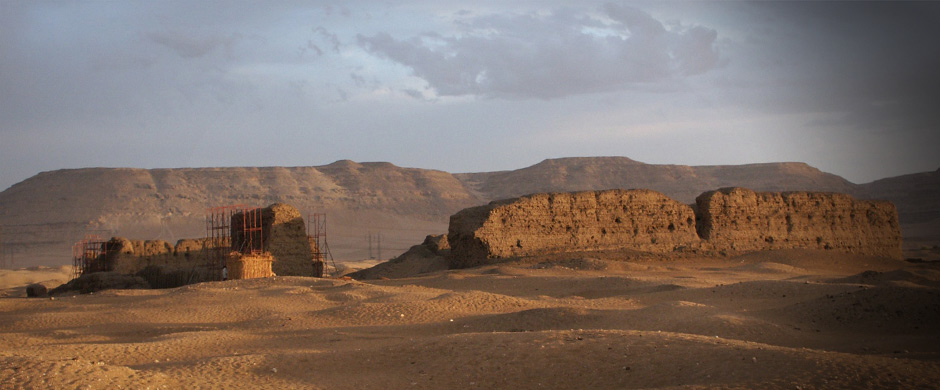 | In the Field
| In the Field

IFA Excavations at Abydos, Egypt
The Institute of Fine Arts is deeply involved in one of the most ambitious and extensive archaeological projects currently active in Egypt. The Institute's excavation, research, and conservation efforts focus on the important site of Abydos in southern Egypt.
The site of Abydos stretches over several square miles of the margins of the desert on the west bank of the Nile in southern Egypt and has an equally expansive history. It was the burial place of Egypt’s first kings and later became the primary cult place of the god Osiris, ruler of the land of the dead. For millennia the site was held to be one of Egypt’s most sacred and was a place of pilgrimage, where visitors could witness the great festival procession of Osiris, in which episodes of his myth were re-enacted in the sacred landscape. Later kings built their own temples at Abydos to associate themselves both with Osiris and with their royal ancestors buried at the site. Visitors to the site today can still walk through the magnificently decorated monuments of Seti I and his son Ramesses II.
In all periods of ancient Egyptian history north Abydos in particular was also an important town, with a significant resident population whose houses and workshops are to a large extent still accessible to excavation. A central component of the town was the temple of the local god, in this case the temple of Osiris. Huge cemetery fields spread over low desert terraces that contain the tombs of many generations of ancient Egyptians, from the most humble local residents to high officials of the royal court.